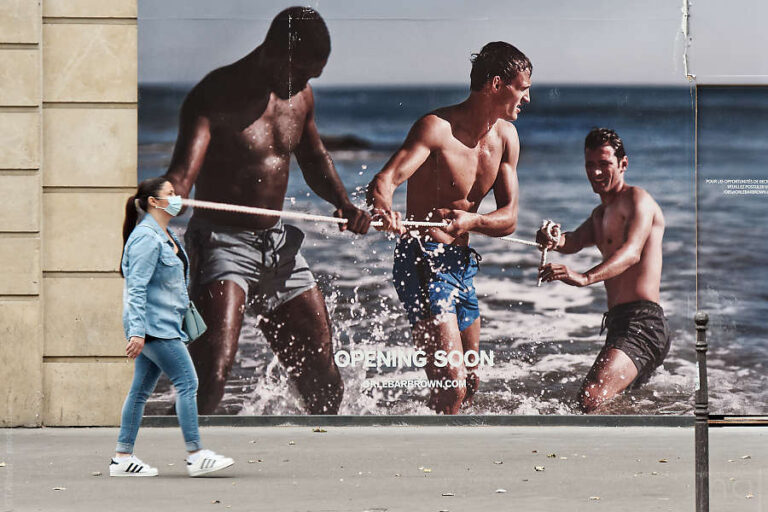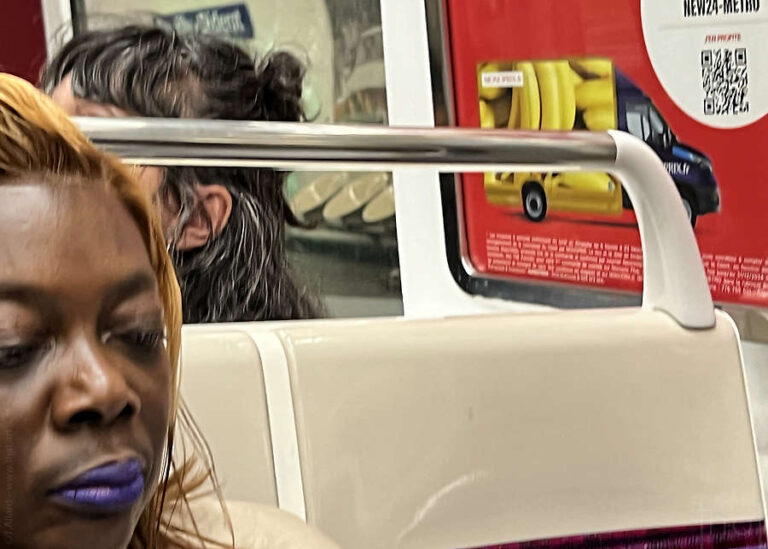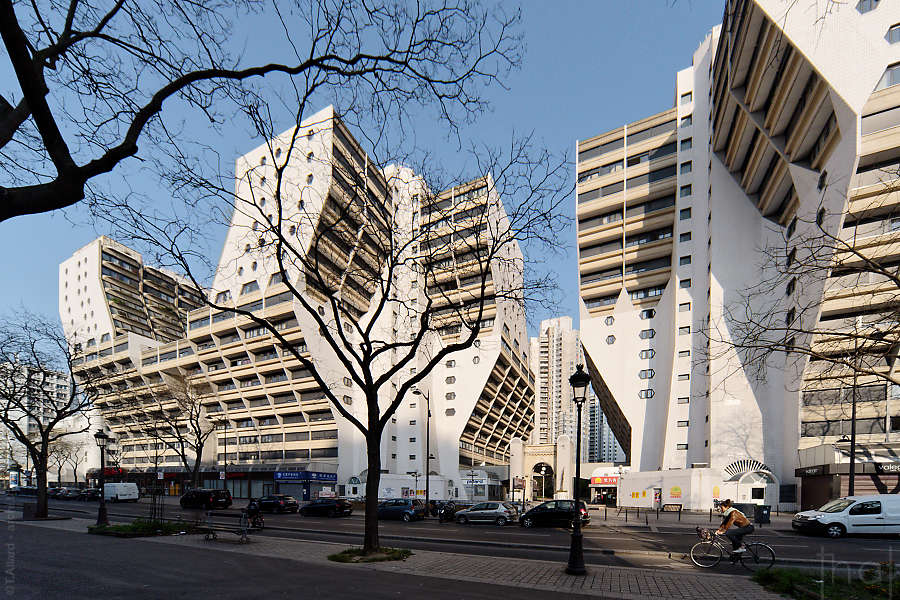
Real estate photography requires at least a 14 mm wide-angle lens.
However, in certain situations, you may still find yourself limited by this “standard” focal length and unable to frame everything you want.
Unless you’ve mastered an image stitching technique, as I sometimes do for architectural panoramas, the ultra-wide angle is a solution to the situation where we can’t go back far enough without hitting a wall.
In this article, the focal lengths indicated correspond to cameras with full-format sensors.
For small-format APS-C sensors, these values can be divided by up to two: for example, a 12 mm full-format lens can correspond to a 6 mm lens for a 4/3 sensor.
What is an ultra-wide-angle lens?

Traditionally, a lens between 24 and 35 mm is considered “wide-angle”, and below 24 mm, the term “ultra-wide-angle” may be used.
But there’s such a difference between a 20mm, a 14mm and a 9mm that it might be time to add a little subtlety to this classification:
– The term “very wide angle” could correspond to lenses between 20 and 14 mm.
– As for lenses from 12 mm upwards, which exceed a 120° angle of restitution, the term “ultra wide angle” would be more appropriate.
To give a basis for comparison, the human binocular field of vision is itself of the order of 120°, and if we consider monocular double vision, it can theoretically reach 180°.
In practice, our intelligible field of vision falls well short of these figures, depending on whether we are perceiving shapes, colors or text.
Some ultra-wide angles used in architectural photography are said to be “rectilinear”, meaning that their deformations are very limited, as they are corrected by the set of lenses that make them up.
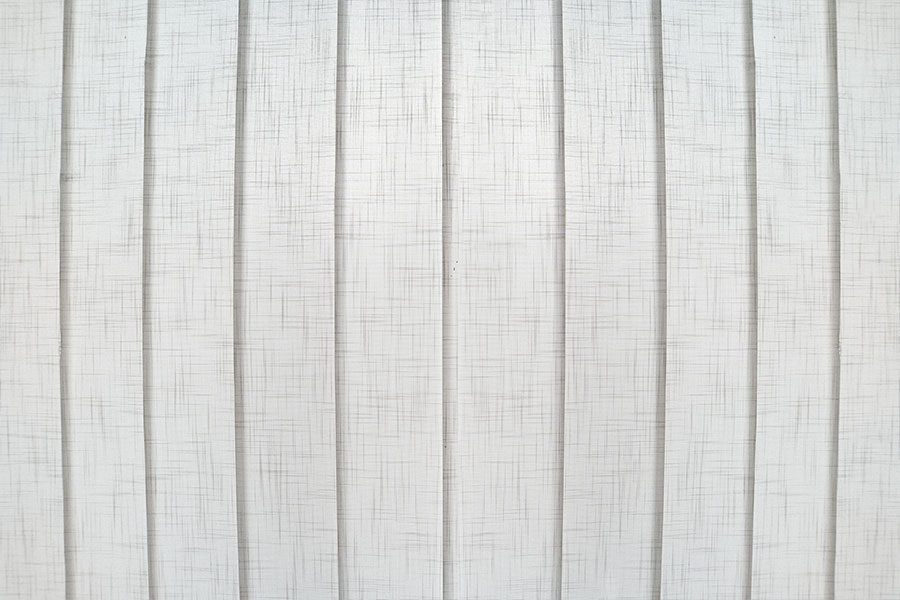
The images illustrating this article were taken with the world’s widest rectilinear ultra-wide-angle lens (to date): a Laowa 9 mm which achieves a 135° angle of view!
Beyond this angle, there are also the famous “fisheye” lenses that reach 180°, but at the cost of totally distorted images.
A few tips for using an ultra-wide angle
You can appreciate the spectacular effect generated by this kind of lens, while at the same time wanting to limit the effect of exaggerated perspective.
Outdoor
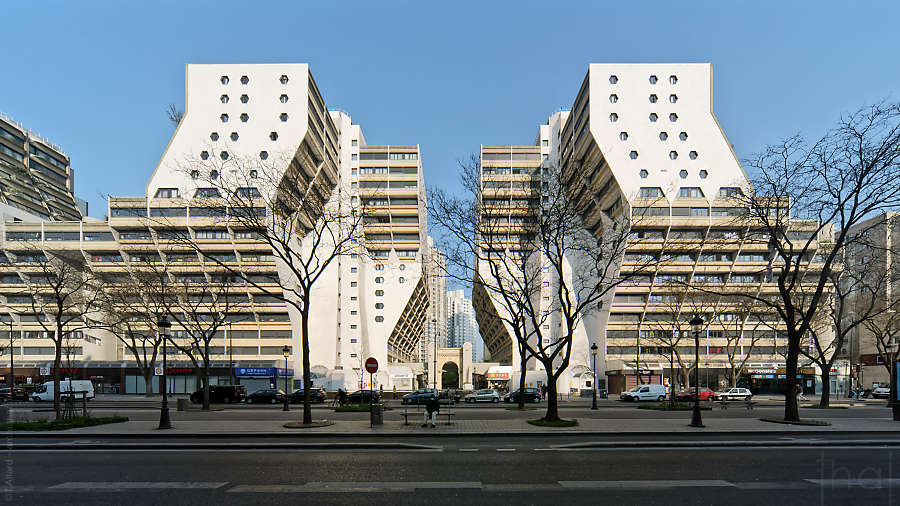
By respecting the verticals at the time of shooting, barrel-type distortion can be corrected relatively well.
Note: the angled facades of the Parisian buildings in “Orgues de Flandre” are not deformations caused by the ultra-wide-angle lens!
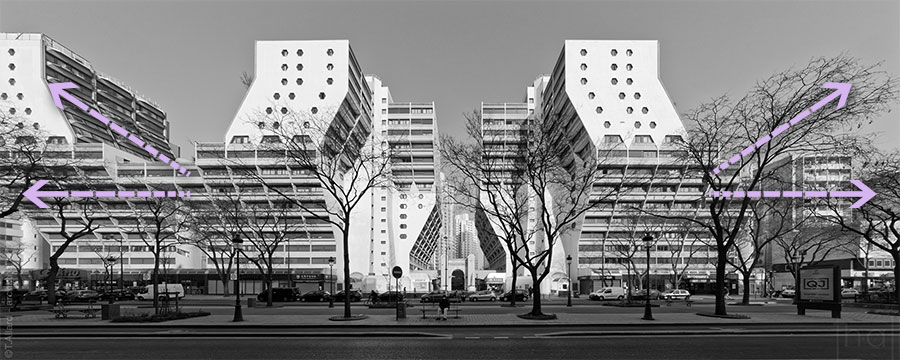
Sometimes it’s necessary to take a crop margin, as here to eliminate the fan-shaped distortion of the trees in the foreground.
This is made possible by the immense field covered by the ultra-wide-angle lens.

Generally speaking, you should also avoid any foreground that is too close on either side of the image, such as a car or a person (at the risk of turning it into a potato).
Urban furniture and vegetation should be considered on a case-by-case basis, as certain distortions are more or less acceptable.
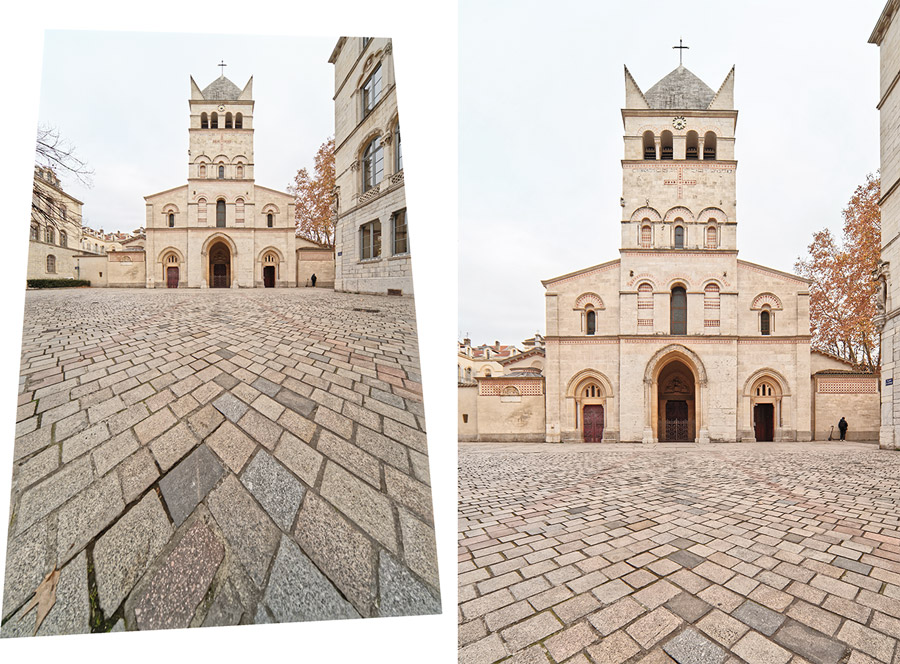
In the case of a vertical shot, the accentuation of perspective can have a negative impact on the top or bottom of the image, requiring cropping in post-production.
See this decentring lens simulation technique in my article on perspective correction in architectural photography.
Inside
Realistically using an ultra-wide-angle lens indoors can be tricky, as rooms and furniture quickly become exaggeratedly large!
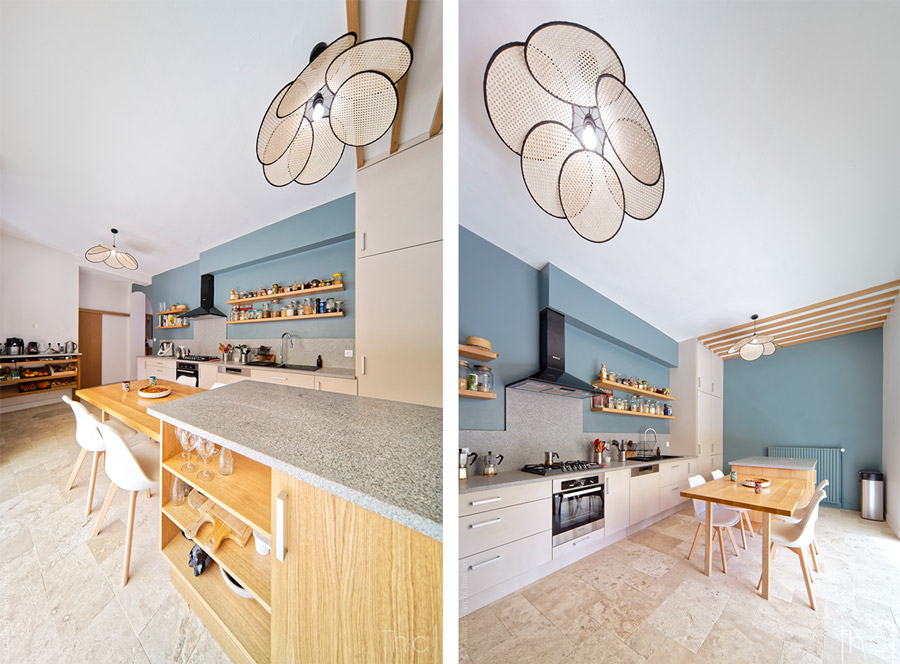
In the 2 examples above, while I was able to “play” with the light fixture in my composition, I then had to crop to square format to avoid retaining the anamorphic upper part, and to reduce the false impression of an extremely high ceiling!
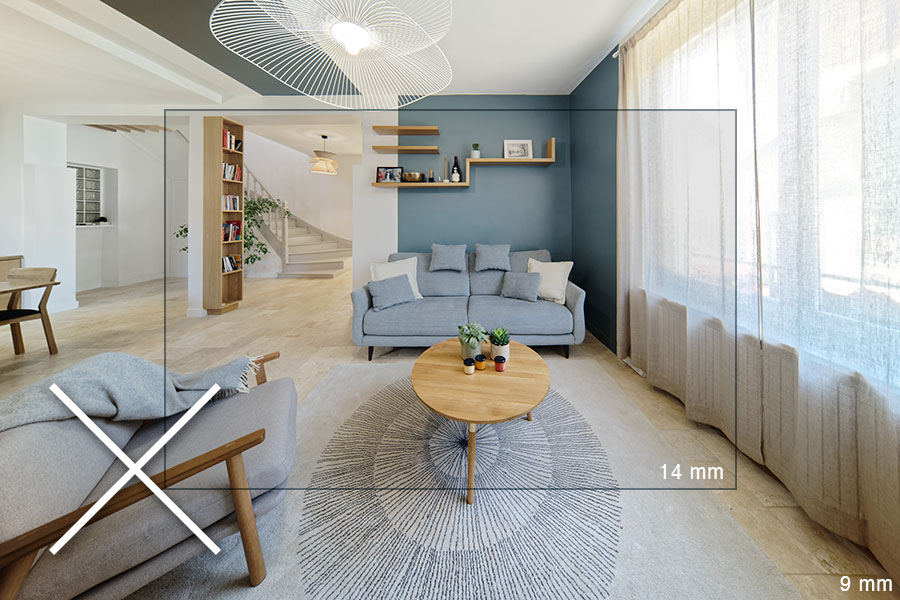
As with standard wide-angle lenses, it is essential to avoid placing furniture or objects too close to the corners of the image.
Walls, doors and windows can be used on the edges of images, as they are slightly more resistant to stretching due to the perspective effect.
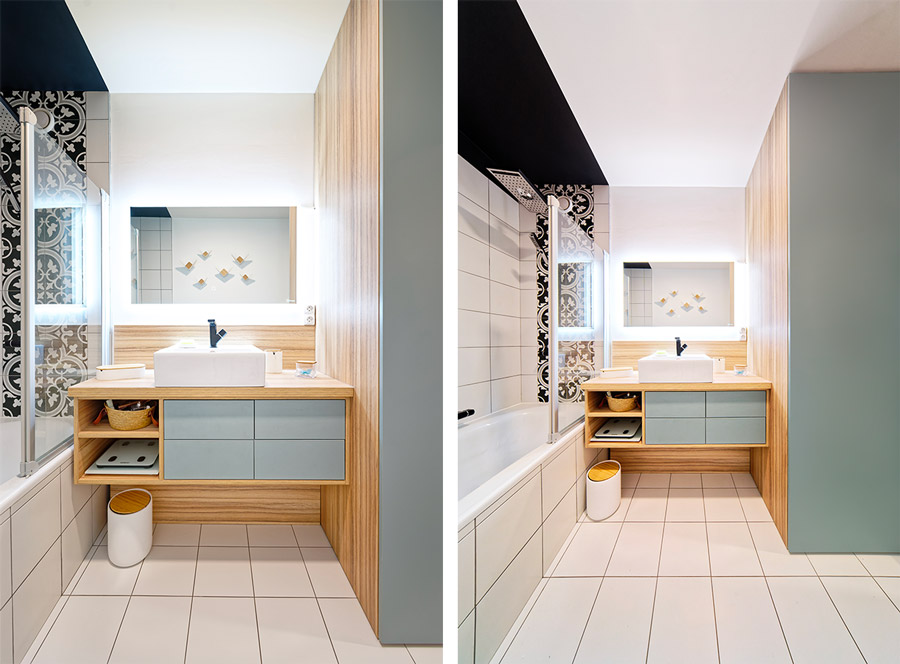
Indoors, with an ultra-wide-angle lens, front positions (perpendicular to the wall) are most often preferred, as any angled shot at such close range accentuates the lines of leakage considerably.
For smaller rooms, it is often necessary to mount the camera body against a wall and then use a remote screen and remote control system.
What about using an ultra-wide angle for real estate photography?
In addition to generating a strong exaggeration of perspective on the sides, ultra-wide-angle lenses often have quality defects in the corners: problems with sharpness, color, low sharpness and significant vignetting.
The difficulty of faithfully reproducing reality and the additional retouching work involved with this type of lens mean that they should only be used if the added value is obvious.
In the example below, which concerns a spacious kitchen in a luxury rental apartment, the use of an ultra-wide angle, even if it can have an impact, is debatable, since the result is to have a larger piece of wall and a much enlarged cupboard section.
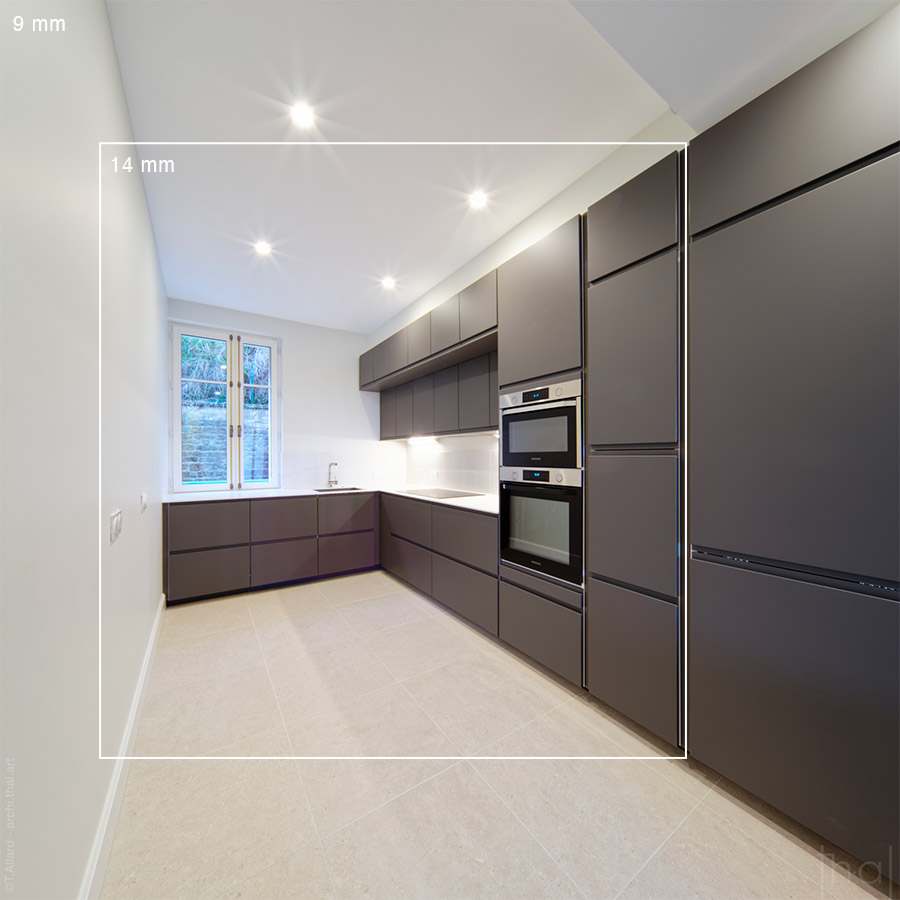
The effect of enlarged rooms, which can be quite deceptive, can nevertheless help to render small apartments more appealing, and be a selling point in real estate ads.
Indoors, the ultra-wide angle is especially useful for taking “impossible” photos in very small rooms, such as kitchens, boudoirs, corridors, bathrooms or powder rooms.
With just 60 cm of distance, you can take photos of a bathroom or kitchen measuring less than 2m2!
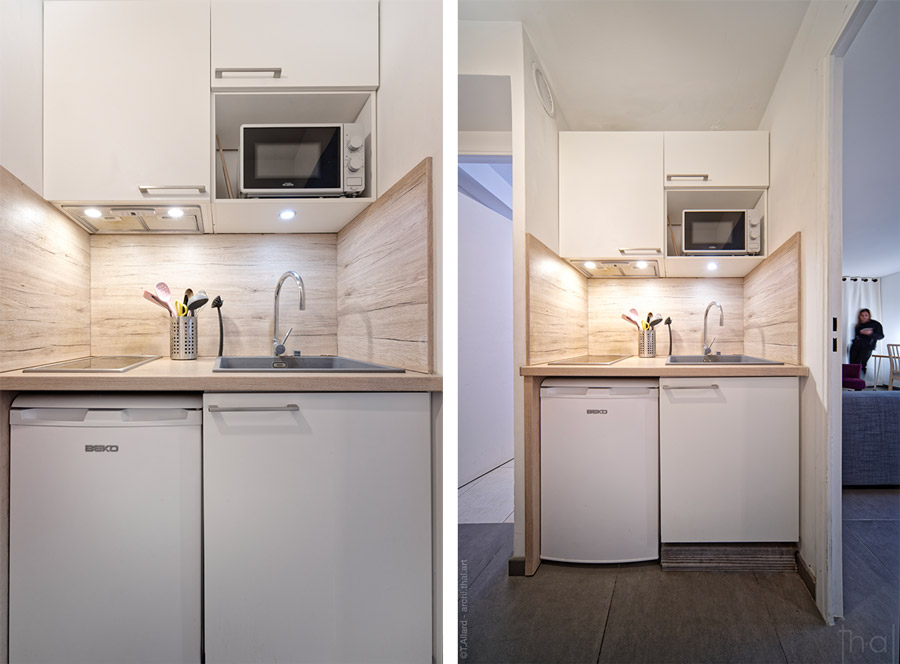
All in all, ultra-wide-angle lenses can be a great asset for real estate photography aimed at renting or selling apartments, as long as you don’t overuse them.
It’s worth noting that when the property to be photographed is empty of furniture, the defects inherent in this type of lens are greatly reduced.
Find out more about my architectural photography services.
Ultra-wide angle and architectural photography
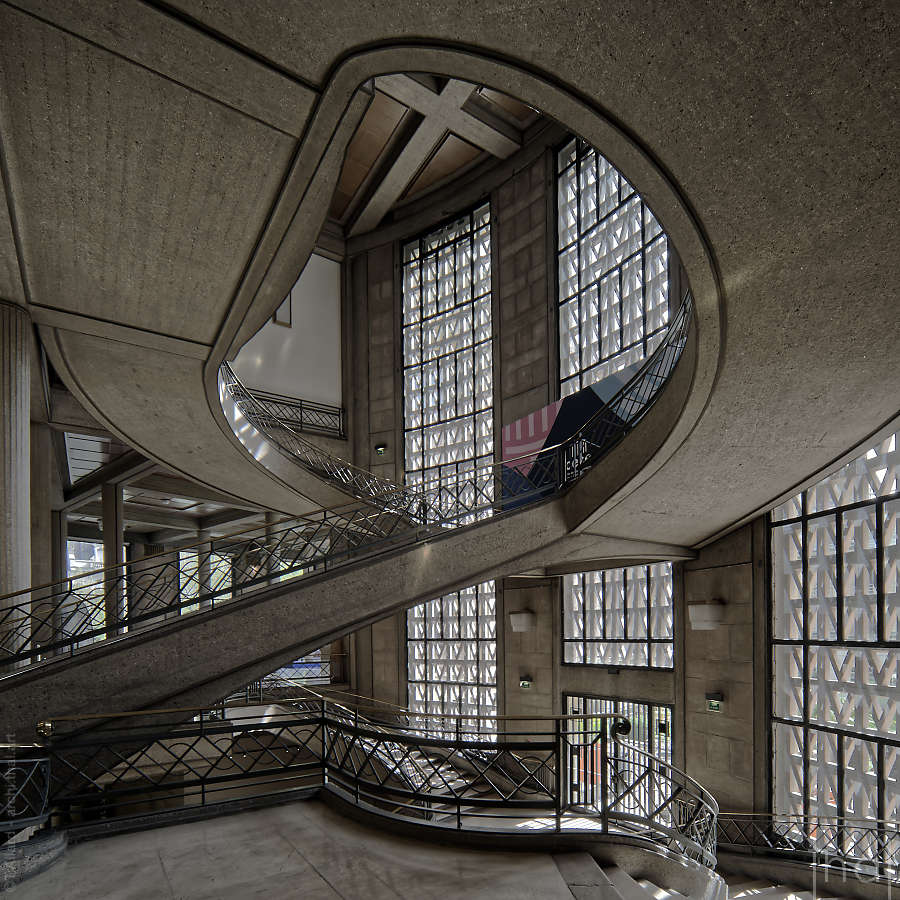
”Great architecture” lends itself well to the use of ultra-wide-angle lenses, and we can create spectacular images while retaining a realistic feel.
This topic may well be the subject of a future article, but in the meantime, if you enjoy this type of imagery, please visit my blog devoted mainly to Brutalist architecture in French heritage.
Photographs and texts: Thierry Allard, all rights reserved.
External links to this article are welcome, but please respect copyright and do not use text extracts or images without first requesting permission.




